As we all know, the Coronavirus has taken a toll on all aspects of society. Recent data shows that it is temporarily helping the environment due to a decrease in greenhouse gas emissions. We must take care of our environment to prevent future coronavirus like diseases. The coronavirus is believed to have come from animals and jumped to humans as their habitats are being threatened and are forced to live alongside humans to a greater extent each day. Living in the Bay Area is a luxury, the beautiful mountains, redwood trees, ocean, and bay. It would be a disservice to not treat our natural surroundings with the utmost care and attention it needs to thrive.
Why Algae?
In the past few years, algal blooms in the San Francisco Bay have become much more abundant which threatens the health of the bay’s vital ecosystems. There are several types of algae but the important distinction is between moderate, harmful, and toxic algae. Algae is formed from excess nutrients in the water and the perfect amount of sunlight and water movement. The nutrients it uses are nitrogen and phosphorus so when greenhouse gas emissions are high, there is a lot more nitrogen in the atmosphere that goes into the water which makes algae grow more. As you can see in the graphics below, algae blooms have only been increasing.¹
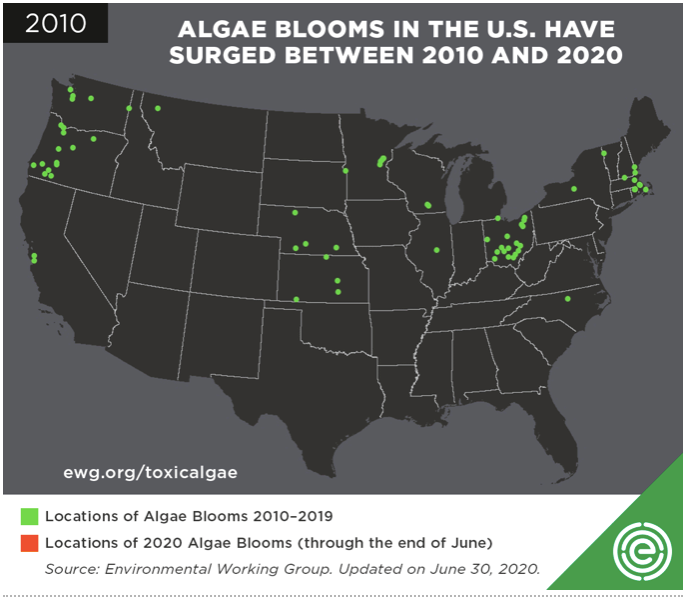 |
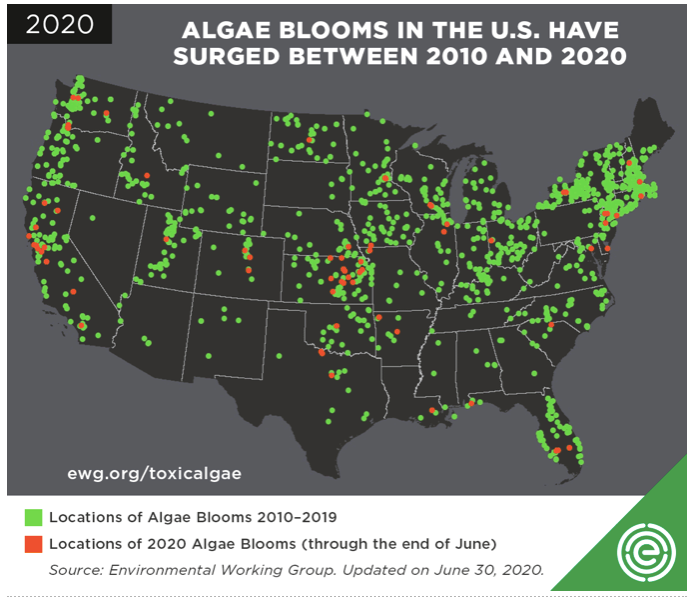 |
Cause
Eutrophication is the process in which nutrients like nitrogen and phosphorus from agriculture and greenhouse gases end up in the water, causing algae growth to erupt.² As temperatures are rising, it creates a more suitable environment for rapid algae growth.³
HABs
Harmful algal blooms are caused when so much algae is made that it blocks sunlight from underwater habitats, which hurts the plants and animals that live there. When the algal blooms die off, their decomposition consumes an excessive amount of oxygen which creates “dead zones” called hypoxia, and only a small number of species can survive in that environment
Eelgrass
In addition, HABs kill eelgrass plants due to lack of oxygen. Eelgrass are extremely important because they keep mud and silt at the bottom, keeping the water clearer and allowing for more aquatic life. Areas where eelgrass grow are very rich in biodiversity so when the eelgrass dies, so does the life around it.&sup4;
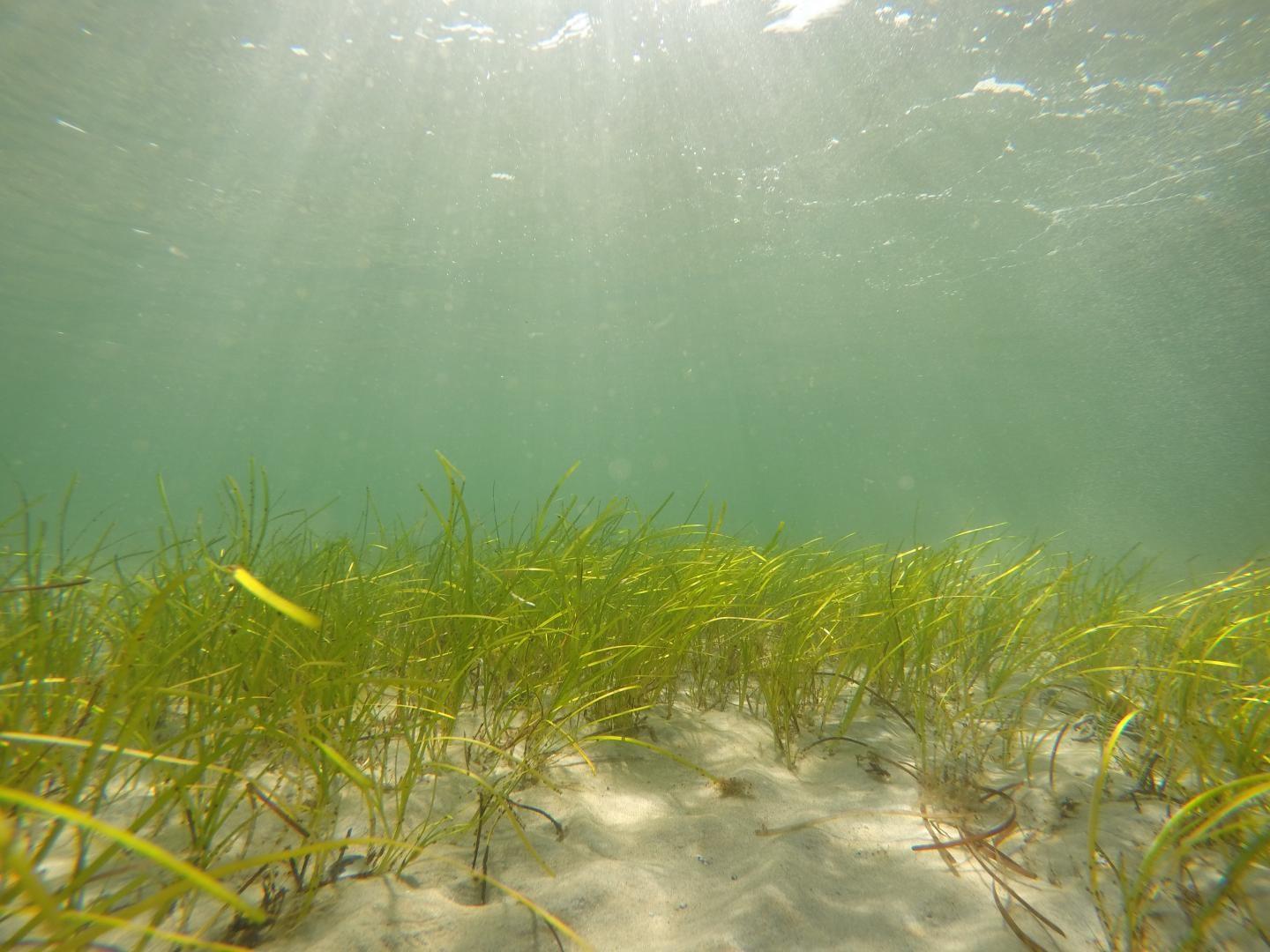
Toxic Algae
Toxic algal blooms are different from harmful algal blooms because they consist of blue-green algae or cyanobacteria which are bacterial cells (prokaryotic) while algal cells are eukaryotic.&sup5; There have to be specific conditions for toxic algae to form that depends on water temperature, sunlight, salinity, water circulation, and movement.⁶ Cyanobacteria produce toxins called microcystins which can be a potential carcinogen to animals and humans. Microcystins can also drift out to sea and contaminate marine shellfish which then accumulates in the shellfish and it takes about 8 weeks to purge it.&sup7; Another type of toxin produced by a specific type of algae, Pseudo-nitzschia australis, is demoic acid. Demoic acid accumulates in small fish and works its way up the food chain.&sup8; Demoic acid can also accumulate in Dungeness crab, which is eaten by humans and makes us sick. In winter of 2019, a commercial ban was placed on Dungeness crab causing many crab fishermen to struggle financially because they had tested for an unsafe amount of demoic acid, making people sick. Toxic algae blooms can kill animals, make people sick,&sup9; and cause financial ruin for fishermen. We need to manage and monitor algal blooms to avoid these disastrous outcomes.
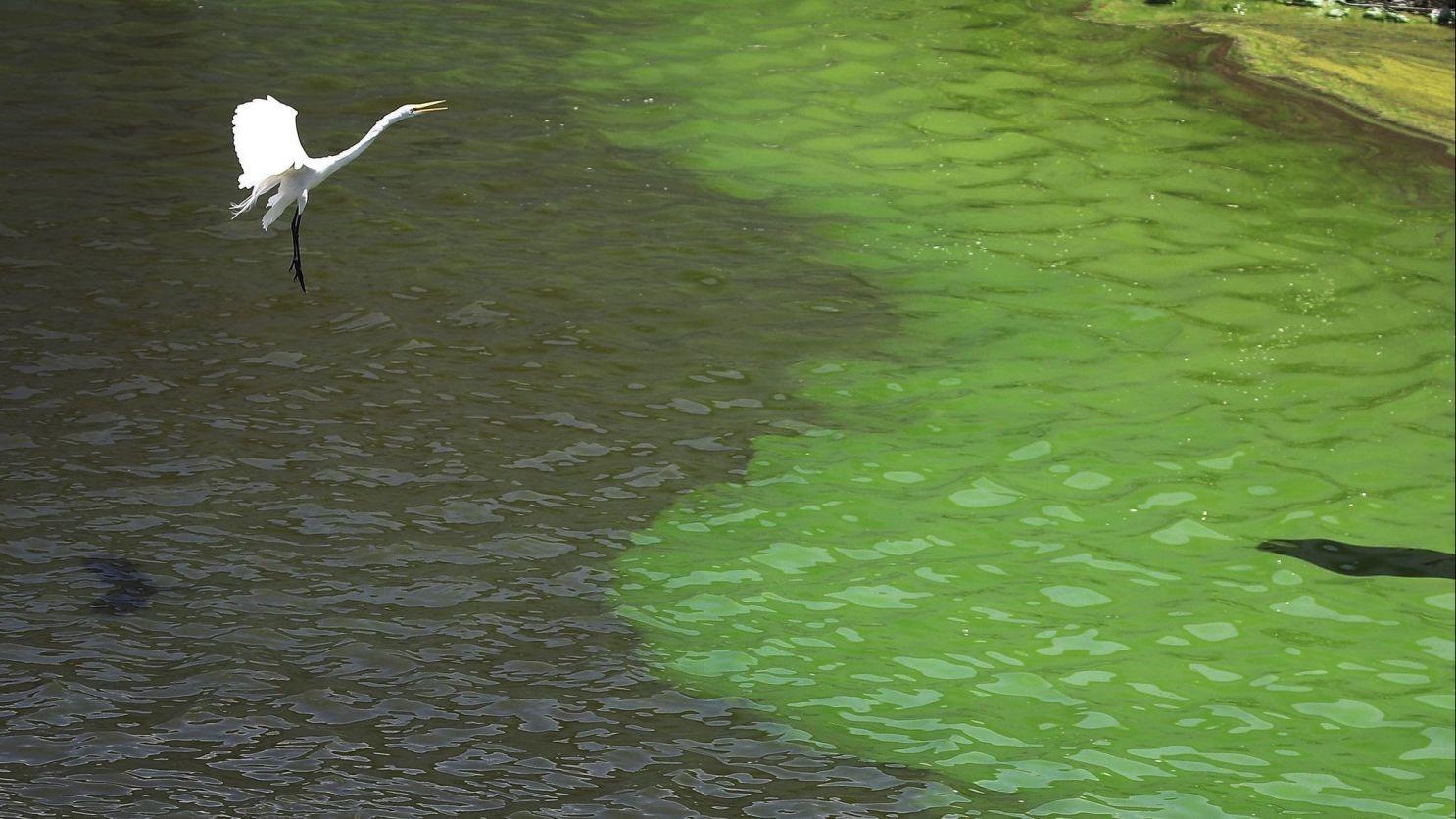
How to tell the difference between a good or bad algal bloom?
Research and follow local authorities’ instructions because often times they have already looked into it and know if it is safe or not. The health department or other local organizations usually publish this in articles, online, newspapers, and on signs near the body of water. It is also key to look out for any dead fish or animals in or near the water.¹&sup0;
How has the coronavirus affected water quality?
The coronavirus has drastically improved the levels of Nitrogen dioxide in the air as you can see in the graphs below.¹¹ Since NO₂ fuels algal blooms, we can expect to see an improvement in water quality, due to NO₂ levels being lower than usual. Not only does this help the bay, but it also helps the environment as a whole. It improves air quality, wildlife health, plant growth, and decreases the number of air pollutants created from high levels of NO₂. Although these are good results, their effects will only be temporary unless we take action to make permanent changes decreasing our carbon footprint.¹²
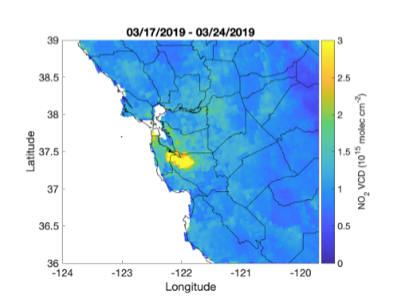 |
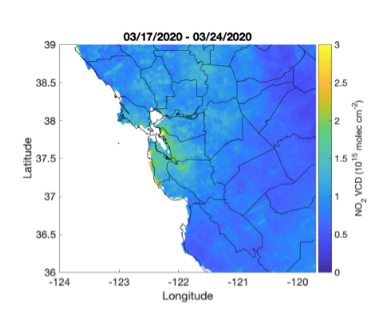 |
Sources
-
Wells, M. (2019, August 13). Toxic algae, deadly for dogs, found in Bay Area lakes. Retrieved July 21, 2020, from https://www.sfgate.com/bayarea/article/cyanobacteria-algae-dogs-sf-bay-area-14301685.php
-
Gibble, C., Peacock, M., & Kudela, R. (2016, October 03). Evidence of freshwater algal toxins in marine shellfish: Implications for human and aquatic health. Retrieved July 21, 2020, from https://www.sciencedirect.com/science/article/pii/S1568988316301639
-
Algae vs. "harmful algae" – what's the difference? (2015, July 14). Retrieved July 21, 2020, from http://lakeeriealgae.com/algae-vs-harmful-algae/
-
Potter, S. (2020, June 24). NASA, Partner Space Agencies Amass Global View of COVID-19 Impacts. Retrieved July 21, 2020, from https://www.nasa.gov/press-release/nasa-partner-space-agencies-amass-global-view-of-covid-19-impacts/
-
Cyanobacteria (Blue-Green Algae) Information. (n.d.). Retrieved July 21, 2020, from http://www.ebparks.org/parks/lake_chabot/update_on_toxic_blue_green_algae.htm
-
Kgo, & Didion, T. (2020, April 08). Coronavirus impact: Maps show how much pollution has dropped in the Bay Area since shelter-in-place orders. Retrieved July 21, 2020, from https://abc7news.com/health/maps-show-how-much-bay-area-pollution-has-dropped-during-the-coronavirus-pandemic/6085217/
-
Stressor Impacts and Mitigation. (2019, July 08). Retrieved July 21, 2020, from https://coastalscience.noaa.gov/research/stressor-impacts-mitigation/
-
Toxic Algae. (n.d.). Retrieved July 21, 2020, from https://www.ewg.org/key-issues/water/toxicalgae
-
Devika Garg-Bansal, S. (2016, October 31). Toxic freshwater algae contaminate marine shellfish in San Francisco Bay. Retrieved July 21, 2020, from https://www.mercurynews.com/2016/10/31/toxic-freshwater-algae-contaminate-marine-shellfish-in-san-francisco-bay/
-
Algal Blooms in the Ocean. (n.d.). Retrieved July 21, 2020, from http://www.waterencyclopedia.com/A-Bi/Algal-Blooms-in-the-Ocean.html
-
Why Care About Eelgrass? A Swedish Perspective... (2018, May 25). Retrieved July 21, 2020, from https://untamedscience.com/biodiversity/eelgrass/
Other helpful sources
-
Air Pollution and Water. (n.d.). Retrieved July 21, 2020, from https://www.windows2universe.org/earth/Atmosphere/water_watersheds.html
-
Algal blooms are getting worse in lakes worldwide. (n.d.). Retrieved July 21, 2020, from https://earthsky.org/earth/satellite-algal-blooms-lakes
-
Cruz, U. (2019, December 12). University of California Santa Cruz. Retrieved July 21, 2020, from https://www.enn.com/articles/61307-california-s-sea-otter-population-could-triple-by-recolonizing-san-francisco-bay
-
New: Project science reports on climate change, Bay restoration science, a Project Phase 2 Science Framework. (n.d.). Retrieved July 21, 2020, from https://www.southbayrestoration.org/
-
University, S. (2019, May 08). Stanford University. Retrieved July 21, 2020, from https://www.enn.com/articles/57927-can-a-drone-reveal-the-murky-secrets-of-san-francisco-bay




